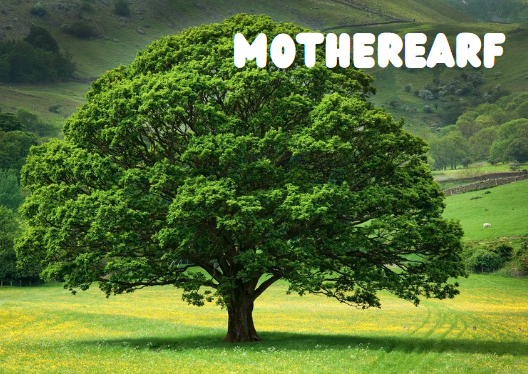Verb That Becomes Its Opposite NYT: A Deep Dive into the Crossword Phenomenon
The world of crossword puzzles is one where language, wit, and culture intersect in exciting ways. A standout among these linguistic challenges is the “verb that becomes its opposite” puzzle, a popular feature in the New York Times (NYT) crossword puzzles. This intriguing concept plays with the meanings of certain verbs that, through their usage or context, can convey meanings opposite to their original definition.
In this article, we will explore the intricacies of the “verb that becomes its opposite NYT” phenomenon, analyzing its linguistic roots, its application in crossword puzzles, and its broader cultural implications. We’ll also offer unique insights into how crossword enthusiasts can approach these types of clues and break them down more easily. So, let’s dig in and uncover the magic of this word puzzle!
What is a “Verb That Becomes Its Opposite”?
At its core, a “verb that becomes its opposite” refers to a linguistic oddity where a single verb can convey two completely contradictory meanings depending on its context. These are sometimes called contronyms, Janus words, or auto-antonyms. For example, the verb “dust” can mean both “to remove dust” (as in “I dusted the furniture”) and “to apply dust” (as in “I dusted the cake with sugar”).
In crossword puzzles, this concept is particularly tricky, as solvers must be aware of the dual meanings of the word and how they play into the theme or structure of the puzzle.
Example of Contronym Verbs
Let’s explore a few examples of common verbs that become their opposites:
- Dust: To clean (remove dust) or to sprinkle (add dust).
- Trim: To add or enhance (decorate a tree) or to reduce (trim the hedge).
- Oversight: The action of overseeing (supervision) or a failure to see (a mistake).
- Left: To remain (after others have gone) or to depart (leave a location).
- Fast: To move quickly or be stuck in place (as in “hold fast”).
These words can provide significant clues in crossword puzzles, where solvers must think carefully about how the word is used.
How the NYT Crossword Uses This Puzzle Format
The New York Times crossword puzzle is renowned for its wit and cleverness, and the “verb that becomes its opposite” is a recurring feature. Typically, such clues will not directly indicate that the answer is a contronym, so solvers need to consider multiple meanings for potential verbs.
For example, a clue might read “To dust, in reverse,” and the solver must think about both the addition and removal meanings of the word. The dual meanings make it a thrilling challenge for crossword lovers, as it requires lateral thinking, word association, and sometimes a good amount of trial and error.
Linguistic Roots of Contronyms: Why Do Words Have Opposite Meanings?
Understanding why contronyms exist can help shed light on why they are such a staple in crossword puzzles. In the English language, verbs that become their opposite can evolve due to changes in societal context, linguistic drift, or even idiomatic expressions.
1. Historical Evolution of Words
Many contronyms developed their dual meanings over centuries. As societies evolved, so did the meanings of the words people used. What might have started as a word with one clear definition could develop new meanings as it was applied in different contexts. For example, the word “cleave” originally meant to split something apart, but it also came to mean to stick together, likely because of its use in religious texts (i.e., “a man shall cleave unto his wife”).
2. Contextual Usage
Context is key in understanding contronyms. The same word can be interpreted differently depending on the context. This phenomenon is amplified in crossword puzzles where the clue is often written in a way that misleads or invites ambiguity. In everyday speech, too, people use verbs that become their opposites with little confusion due to the context they provide.
3. Idiomatic Expressions
Idiomatic expressions also contribute to contronym formation. For instance, in idiomatic English, to “weather a storm” means to endure it, but “weather” can also mean to wear away over time. Idiomatic phrases sometimes shift the meaning of words, giving them dual or opposite definitions.
The Role of Crossword Puzzles in Word Play Culture
Crossword puzzles are a beloved part of American culture, especially with the rise of digital platforms that have made the New York Times crossword more accessible. The use of contronyms, and specifically verbs that become their opposites, is a testament to how crosswords reflect the richness and complexity of the English language.
1. Crosswords as Language Games
The “verb that becomes its opposite” puzzles challenge solvers to not only know the meanings of words but to engage with their flexibility and fluidity. This interplay of meanings mirrors the broader evolution of the English language, where words are in a constant state of flux. Crossword puzzles are a form of entertainment that celebrates this linguistic dynamism.
2. NYT Crossword and Intellectual Tradition
The NYT crossword is known for catering to a more advanced audience, often including puns, wordplay, and multi-layered meanings. The challenge of solving contronym clues fits perfectly into the NYT crossword’s tradition of stimulating critical thinking and problem-solving. These puzzles challenge not just vocabulary but the solver’s ability to think outside the box.
3. Cultural Significance
Crosswords have long been a social activity and intellectual exercise, and their popularity has soared in recent years. Puzzles like the “verb that becomes its opposite” tap into a universal love of language and wordplay. They offer a way to engage with language in a fun, challenging way while also building vocabulary and mental flexibility.
Strategies for Solving “Verb That Becomes Its Opposite NYT” Crossword Puzzles
Given the complexity of contronym clues in NYT crosswords, it’s useful to have a strategy in place. Below are some tips for tackling these tricky puzzles:
1. Consider Multiple Meanings of the Verb
When encountering a clue that seems like a contronym, think about the word’s possible opposite meanings. For example, if the clue is “Dust,” don’t just think about cleaning—consider the act of sprinkling or adding a substance as well.
2. Contextual Analysis
Look at the other clues surrounding the possible contronym. The NYT crossword often has themes that link answers together. If the theme of the puzzle involves dual meanings or opposites, it’s a safe bet that the contronym verb is being used.
3. Synonym Search
Sometimes the verb you’re trying to solve for can be found by thinking about synonyms. For example, if you’re struggling to determine which meaning of “dust” to apply, think about related verbs like “clean” or “sprinkle” to narrow down your answer.
4. Stay Flexible and Think Creatively
Contronyms are inherently playful, so don’t be afraid to experiment with different interpretations of the word. Often, the answer will seem obvious in hindsight, but it takes some lateral thinking to get there.
FAQs about the “Verb That Becomes Its Opposite NYT”
1. What is a contronym?
A contronym is a word with two opposite or contradictory meanings. For example, the verb “dust” can mean both to remove dust and to apply it.
2. Why are contronyms used in crossword puzzles?
Contronyms are used in crossword puzzles because they provide an additional layer of complexity and require solvers to think about multiple meanings of a word. They are a popular feature in the New York Times crossword.
3. Can all verbs have opposite meanings?
No, not all verbs can have opposite meanings. Contronyms are a linguistic rarity and occur due to historical, contextual, or idiomatic reasons.
4. How do I solve crossword puzzles with contronym clues?
To solve contronym clues in crossword puzzles, consider all possible meanings of the word and how they fit into the broader theme of the puzzle. Try thinking about synonyms and use the surrounding clues for context.
Conclusion
The “verb that becomes its opposite NYT” puzzle is a fascinating linguistic challenge that highlights the fluidity of the English language. As contronyms reflect how words evolve and take on new meanings over time, they also serve as a reminder of how complex and dynamic language can be. The New York Times crossword, with its emphasis on intellectual rigor and wordplay, is the perfect platform for showcasing these linguistic oddities. For crossword enthusiasts, mastering the art of solving contronym clues offers not only a mental workout but also a deeper appreciation for the richness of the English language.






